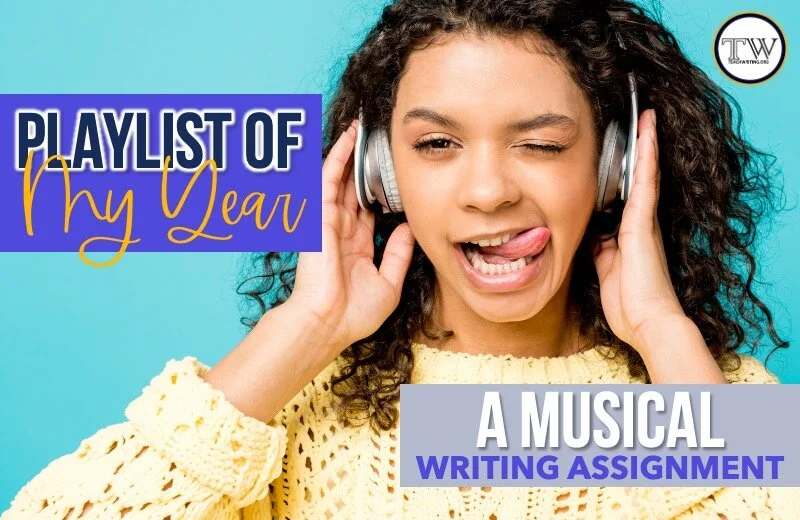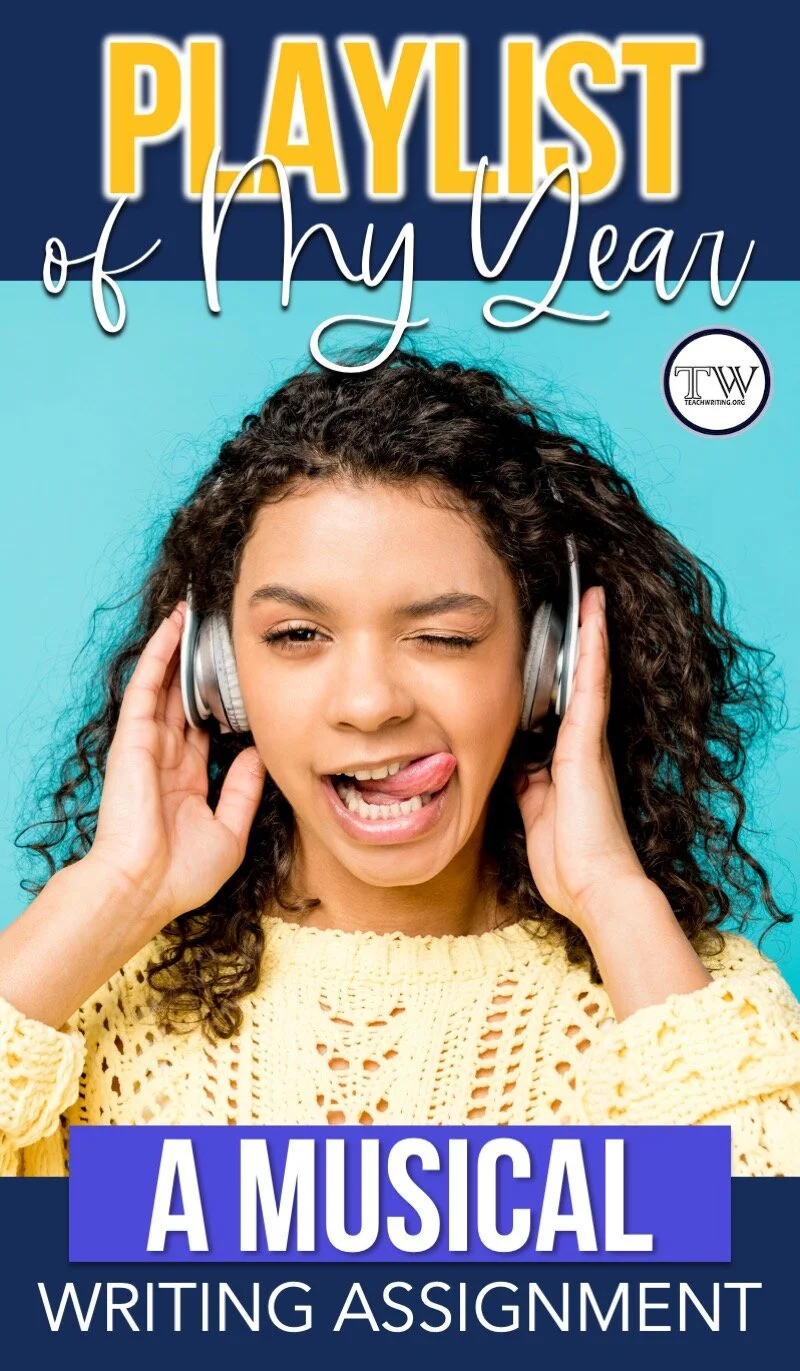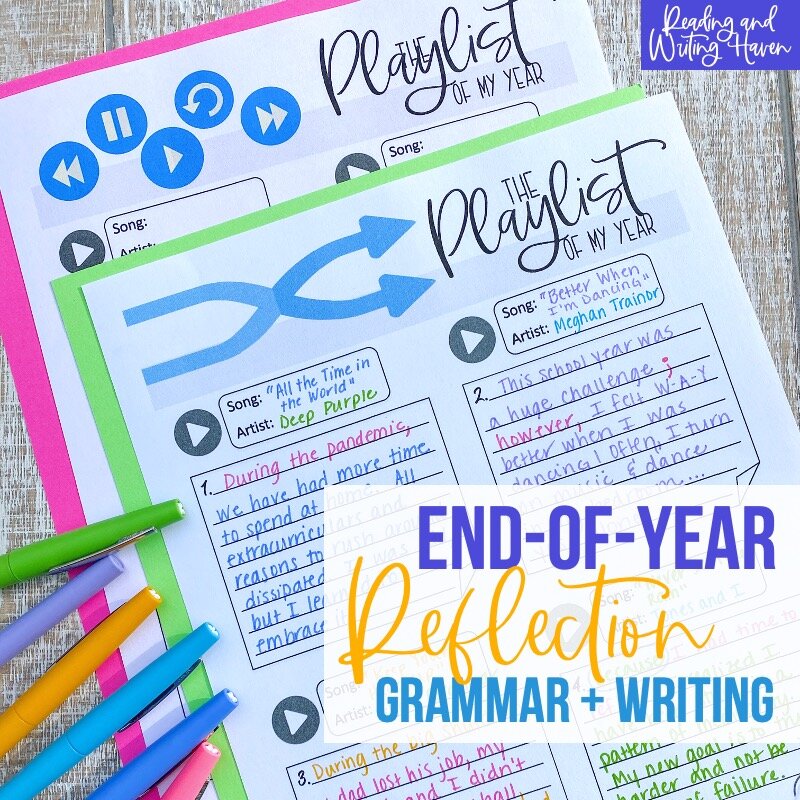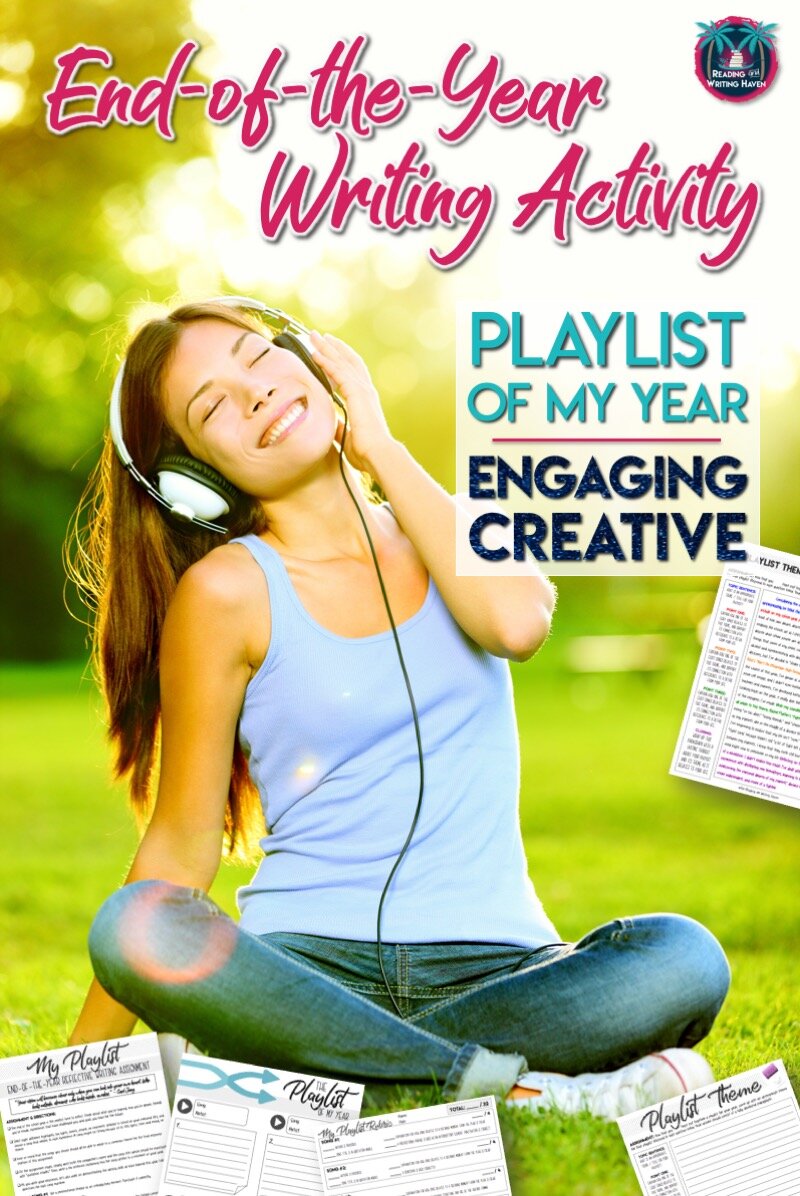Writing About Theme with an Engaging Musical Twist: An End-of-Course Assignment
Secondary ELA teachers can engage students in meaningful, purposeful writing activities at the end of the semester or year without burying themselves in grading and their students in hours of work -- it's true. Read on to be inspired.
"What?!?!? Are you C-R-A-Z-Y? This is the worst class EVER!"
Have you ever asked students to write an essay in December or May? If so, you might have heard a chorus of painful groans. It’s not unusual to experience pushback from students when they are asked to do something that requires as much mental energy as writing an essay during the last month of attendance. Summative assessments are in sight, and even better, summer is so close they can smell it.
The truth is, teachers don't want to be bogged down with huge research papers in May, either. We want to be outside enjoying the fresh air and freedom just as much as our students. I always make it a point to collect the last research paper of the year in April so that I'm free of that stress by May.
Still, students (and especially teenagers who will be attending college in the future) need to continue honing their writing skills through the end of the year, which begs the question: How can teachers encourage meaningful end-of-the-year writing assignments without overwhelming both themselves and their students?
A quick browse on Google, Teachers Pay Teachers, or Pinterest will result in hundreds, if not thousands of options for engaging students in meaningful writing assignments that are short, purposeful, and worthwhile. In this post, I'm writing about my personal favorite, one I created for my own classroom -- The Playlist of My Year.
I truly believe in the power of music. It can transform a boring lesson to a much more powerful one. It can wow evaluators and create for learning activities that students will remember for years. However, music needs to be aligned with best practices in order to be more than just "fluff."
The Hook
In order to engage my students in this lesson, I begin with an anticipatory set. I play a song as students enter the room (a popular one or one students would be able to remember some of the lyrics to afterward usually works best - "Bad Blood," "Roar," "Firework," "Happy," "Shake it Off," and "Don't Stop Believin'" are just a few examples). Afterward, I hold a brief discussion with students during which I ask them questions like these:
What are some possible themes for this song?
What examples from your life or events from this school year would relate to this song?
What are some additional songs that have similar themes?
It helps to have answers in mind before class begins just in case the discussion stalls and you need to help students with their brainstorming. Generally, however, they have no shortage of input or opinion as it relates to music.
The Activity
I then encourage students to think about their school year and make a list (which they are not required to share with anyone) of the highlights and lowlights that stand out to them. This activity is reflective, which makes it perfect for the end of the year.
Once students have developed a list of at least eight memorable events, relationships, triumphs, failures, and places, I ask them to identify a song that relates to each item. If you have one-to-one capabilities or can access a computer lab, this portion works well as an in-class activity. If not, asking students to research songs might be more effective as a homework assignment.
In order to work on writing skills we have learned throughout the year, I ask students to explain how the song they have chosen relates to the item on their brainstorming list. In doing so, they are required to demonstrate proficiency with a writing skill.
For example, in one response, they might need to use a semicolon correctly. In the next, they are asked to use an Oxford comma in a parallel list. It's not that I don't expect them to demonstrate age-appropriate command of writing in every response, but if I don't require them to use more advanced skills, sometimes they opt to stick with the basics because it's easier.
Students' responses in this portion of the assignment are generally only a few sentences long, and I have a rubric, which makes grading their answers quick.
Because I teach high school, asking my students to write only a few sentences at a time really isn't a sufficient indicator of their ability to construct well-developed ideas, so if you need a longer writing activity, here's how I step it up a notch. By this point, they've developed a playlist. Now, I ask them to identify a common theme among the songs on their playlist. This part of the assignment challenges them, and sometimes they end up switching a couple songs so that they all share a clear theme. Once a theme is established, students then write an expository response wherein they tie together ideas thematically, using complete sentences and supporting details. I limit their extended answers to a well-developed paragraph to save time for all parties involved.
You can view the assignment materials I use for this engaging, end-of-the-year writing activity here.
Differentiation Options
I've taught various levels of seventh grade through twelfth grade, so every time I make an assignment, my brain automatically begins brainstorming ways to differentiate it for struggling readers or writers. Part of the difficulty of this assignment for at-risk students would be all of the higher-order thinking involved. By design, everything from the initial brainstorming list to the song choices to the theme identification comes from their own head. In order to scaffold this process, reduce the number of decisions they would need to make, and promote success, a few differentiation options wouldn't hurt.
The initial list: Help students brainstorm possible events (like homecoming, a school fundraiser, a family vacation, or shooting their first deer), relationships (such as new friendships they have developed), challenges (like detentions, peer pressure, family stress, homework completion), and successes (for instance, improving grades, passing a big test, developing an appreciation for a subject, making an athletic team, participating in an extracurricular activity).
The song choice: Provide students with a short list of websites that list popular songs, or hold a class brainstorming session where you first have students list songs they like, and then go back and help them identify what those songs are about (which would, in turn, help students match songs with items on their list).
The writing skills: Make sure the writing expectations students are asked to demonstrate are skills that are appropriate for their developmental readiness. For instance, I would not hesitate to ask my enriched freshmen to write a paragraph using one of each of the four sentence constructions. By contrast, my at-risk students would need a different task, like writing a few sentences that are not stringy or choppy or avoiding fragments and run-ons.
The extended response: To scaffold the extended response, some students need multiple examples. Instead of just showing my struggling writers an example of the type of response I'm asking them to create, I also model writing one (and include their input) during class while they listen to my think-alouds and answer my questions. Additionally, providing students with a list of themes or topic words is beneficial.
The Closure
I always like to do something other than just collect papers when my students pour their hearts out into an assignment like this. On the other hand, I hate the idea of making anyone feel uncomfortable by requiring them to share personal details. Music can elicit emotional responses, and students need to know what they share from their reflection won’t be broadcast to others if it’s private.
In order to provide a safe place for students to share their thoughts, I invite them to begin by sharing with a partner. Most of my students have at least one other person in the class who they would call a friend (although I have run into the issue where a student doesn't want to pair up...that's fine. I don't make them).
After talking over their playlist and theme with a partner, I share my own examples. I think it's important for teachers to model being in that place of vulnerability if we are going to ask students to do the same.
Then, I call for volunteers to share with the group. (I have found it helps to increase involvement when I offer to play part of their favorite song on the playlist for the class.) Many students participate, even if they only choose to talk about one aspect of their assignment.
Trading ideas and opening up about our self-reflections is a meaningful activity for the end of the year. This assignment combines elements of writing mastery, growth mindset, making connections, theme analysis, critical thinking, and feel-good music. At the very end of the school year, students need to understand that teachers want to see solid writing, but it doesn't have to be in the context of an entire essay. When we take time to emphasize the importance and weight that a few sentences carry, it helps students understand that every word they write matters.
Related Resource Spotlight
Click on the image below to access the full resource for this fun music-based writing assignment for secondary ELA.
about the author
Melissa is the creator of The Reading and Writing Haven and a collaborative blogger on Teachwriting.org.
An English teacher for over a decade, Melissa is an avid reader and writer, and she loves sharing ideas and collaborating with fellow educators. Melissa use her degrees in English and Curriculum & Instruction as well as her Reading Specialist certification to ponder today’s educational issues while developing resources to help teachers, students, and parents make learning more relevant, meaningful, and engaging.
When she's not teaching, Melissa lives for drinking a good cup of coffee, loving on her family, working out, and contemplating the structure of a sentence as well as how she can lead her students to deeper reading comprehension (Melissa's true nerdy passions).
Let's Connect!
Blog Store Instagram
you might enjoy these Related Articles:
30 Super Engaging End-of-Year Writing Projects
13 Ways Pictures Can Inspire Students to Write Poetry





